| Back to Back Issues Page |
 |
|
Restore Nature, Issue #013 June 14, 2024 |
HelloRESTORE NATURENewsletter 13June 2024Dear readers I hope you are all doing well. This letter is about something I do parallel to my gardening work. It is for anyone with a renovation project on wooden floors in an old house, and is about my struggle with cleaning and coating the wood, and what is available on the market not being suitable or eco friendly. Garden activitiesJust for the record, the garden is still going. I've been soaking seeds in smoke solution that is required for Fynbos. I'm hoping to increase my garden's native content to 50% one day. So far this did not make for very photogenic moments.The garden is dank with rain and suddenly all the fallen leaves have turned to lovely black decomposing compost. I've planted out quite a number of onions, pak choi, broccoli, and cos lettuce and its all doing OK in the chilly weather. Trying broad beans for the second time as the last lot got entirely devoured by mice. But enough of the garden. I've also processed an enormous pile of bamboo and hope to write about that when I have some pictures of what I'm going to build with it.
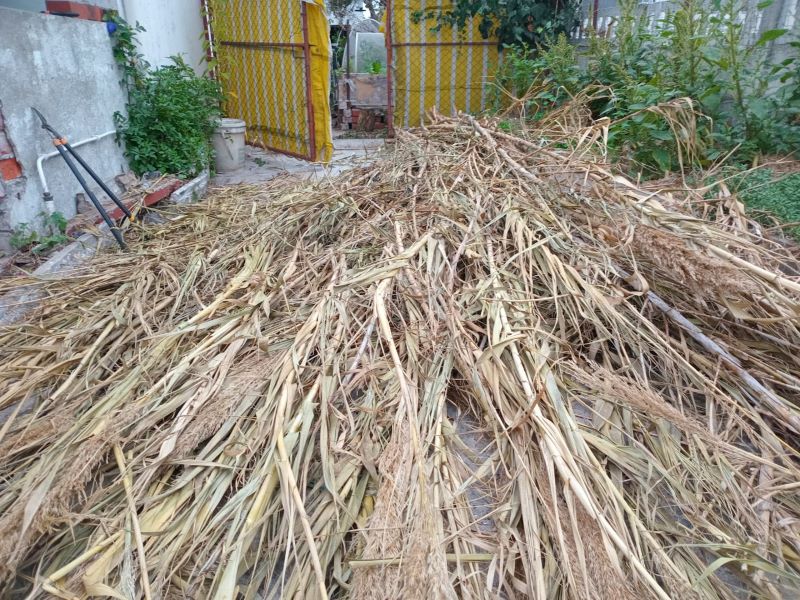
A kind friend from the neighbourhood gifted me with this load of bamboo that was invading his garden. The critical pathMost of my time these days is taken up by the renovation and renting of our antique mud brick, wooden floored family home so that myself and siblings can have a little income. I've been working about 18 months on the project, never expecting it to take so long.Recently, after a lot of guilt about being so 'slow' I asked AI how long the job should take, listing all the jobs I could remember large and small, and the robot told me it would take at least 6 months to a year, working more than forty hours a week, and I should take it slow to avoid burnout and exhaustion. If even the robot is concerned about the grit needed to finish this job I feel less guilty. This is so different from expectations I'd been unrealistically placing upon myself. I can finally breathe out and just try and enjoy this task and get better at it. I do wish I'd researched on predicting its duration earlier. The amount of time it needed would have shocked me into taking my management of the project to another level. With gardening, writing, caring for my mother and renovation I've had a lot on my plate and I'm not good at organizing. I have a quite severe case of attention deficit, which doesn't really improve with age. This has always necessitated working harder, and should make me double down on learning organization skills. I've been reading up on project management. It was quite nebulous or else obvious stuff, but I think I've struck a gold nugget. It is the idea of the critical path. List the different jobs, line them up according to interdependencies or those that have to follow others. This gives you several chains of to do lists. The critical path is the chain which takes the longest. Your job is then to insure that this chain gets priority and is slowed down as little as possible while you fit in the others alongside. Doing it all DIY is not quite the same as organizing teams which tackle the different chains, but I've a hope that the critical path as an idea will help me set priorities for what I do weekly and engage the two people that are helping me more effectively.
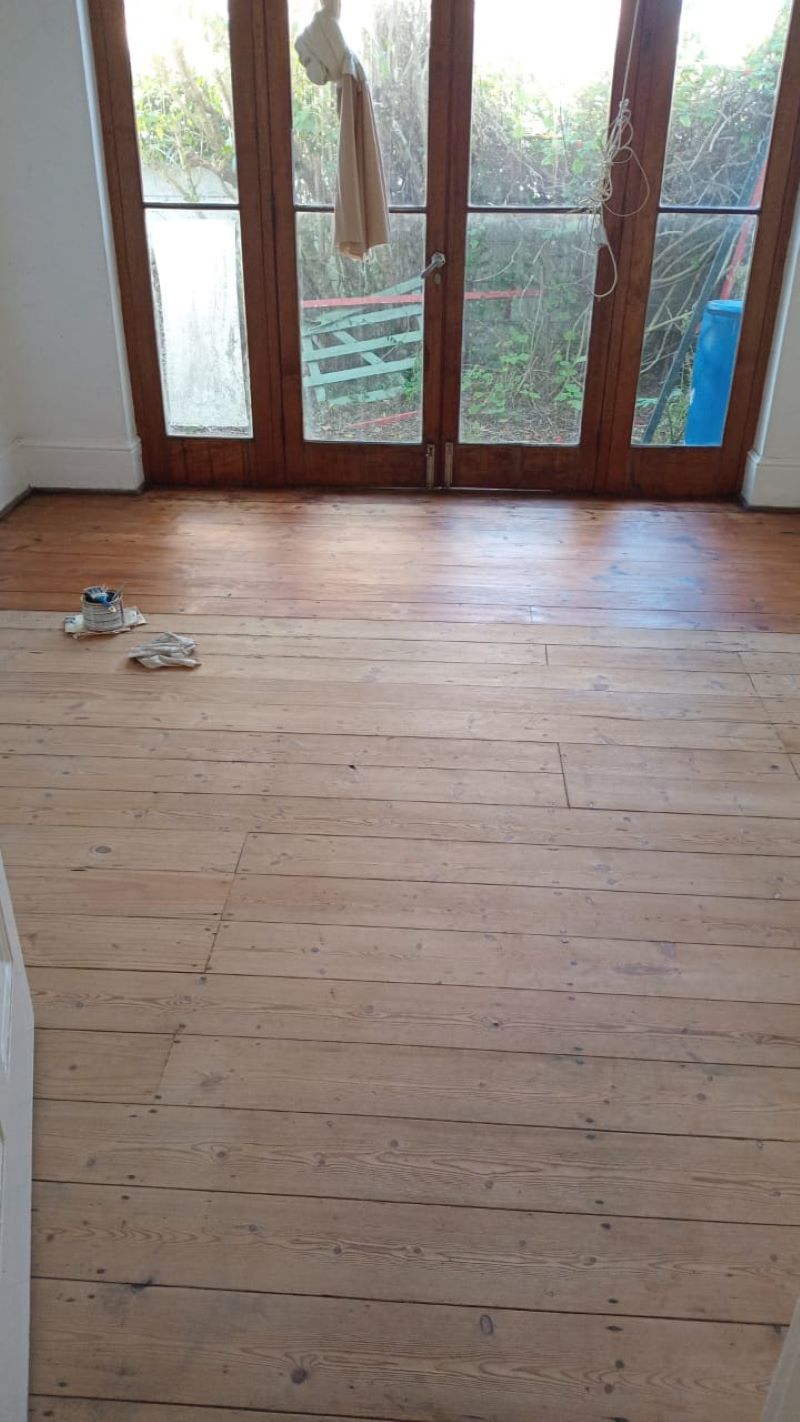
Applying natural floor coating. The oregen pine has been cleaned with washing soda, and I've begun to work on applying the natural coating. This was the cleanest floor in the house. Our wooden floorsNatural old or modern treatment ?Something that has slowed me down a lot is the floors. We have sprung oregon pine that is about 100 years old. According to the expert at Hawkes and Findlay hardware in Observatory, who I spoke to after months of fretting over the pros and cons, there is ongoing contention about whether to do things the old fashioned way, using natural coating materials or to use the new modern polyurethane floor coatings which require sanding. Neither is ideal. No solution to the argument has been found.The natural materials are not as resistant to wear as polyurethane and the poly can thus protect the floor and preserve it. Then again, sanding the floors of an old house is ill advised, as after 3 sandings or more, the tongue and groove becomes weaker and the whole floor may need to be replaced. As you can imagine this is anything but environmentally friendly and extremely expensive. New timber must be cut and all the work that goes into processing and transport uses energy, and in this country this particular wood is next to irreplacable.
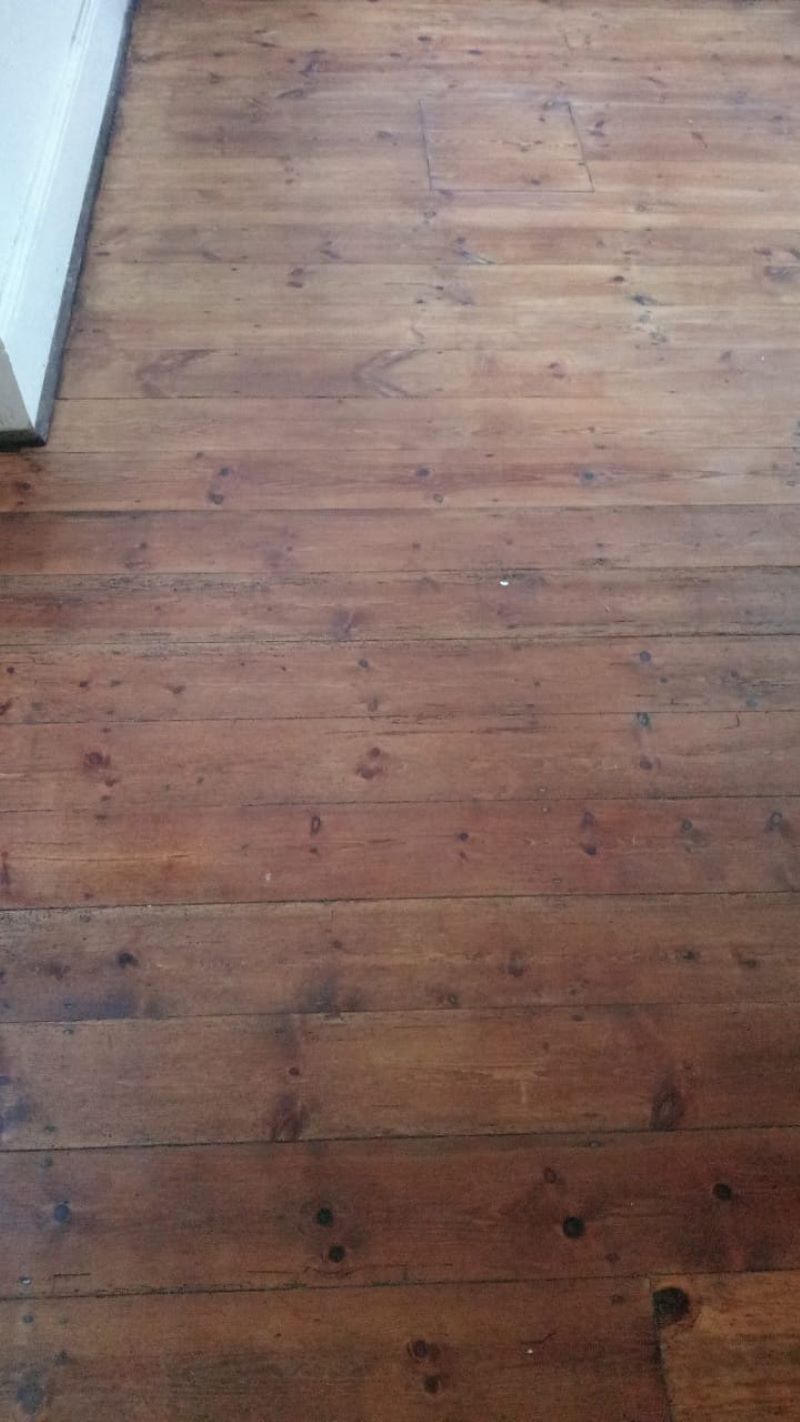
This was a floor that did not come clean, but was coated with the natural emulsion. In daylight it shows dark areas. Other floors, like that in the passage and old kitchen are worse. However, as it dries, the floors do brighten up a little. Trying the old approachWe always used to clean the floors with hydroxides like washing soda or caustic soda and then coat them with fresh sealer. But I found that the sealer we used is no longer produced, and it seems these days all products contained polyurethane, except a very few, extremely pricy brands which were linseed oil based. I worked for a farmer's wife in Germany and used to strip the floors of a double story house with sugar soap and recoat with wax every week, so it seems to be standard procedure to use this type of combination of soaping agents and polishes or sealers, so I began to clean the floors.Our floors had not been cleaned for decades and were a filthy grey black. I scrubbed and scrubbed and some of the floors came up fresh and golden, as if sanded. Others would not yield, even to the stronger solution that is used for drain cleaner ! I got them all to a level of cleanliness I thought passable after many weeks, having to clean the floor in my old kitchen seven times. I then set about making a formulation, a mix of turpentine, boiled linseed oil and beeswax from our own hive. I made about 30 different combinations and tested them, trying to work out which substances had what effect on the final mix. I couldn't get the right proportions.
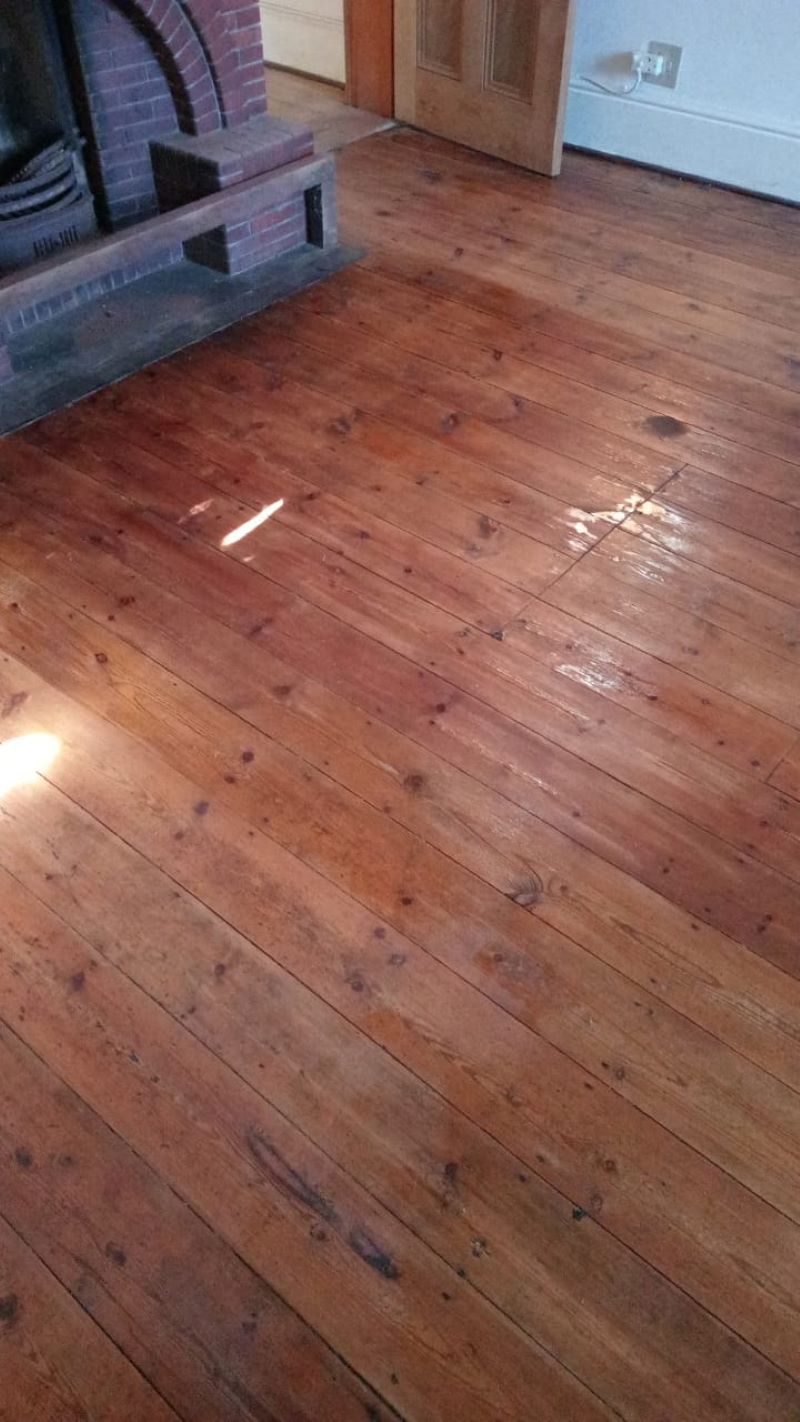
The first polyurethane coating on the old lounge floor. seduction and repulsionI became exhausted with trying to find a good natural formulation, and persuaded that natural coatings were too vulnerable and not tenant friendly, I finally decided to use polyurethane because it would 'preserve' the floor for longer. I painted it on the floor in one room and was very uncomfortable with the effect. It was labeled 'clear' but it had a reddening effect that was very brash, making the dark grain and knots stand out the way they do on cheap pine boards that have been stained. But it did flatten out the greyish dirt that I was unable to remove so that floor looked fresh and 'done'. By contrast my natural mixes deepened the golden colour of the wood in a very pleasing way, and when the raw wood is very clean it is exceptionally beautiful and sensual to look at but where there is the slightest residue of dirt the floor is dark by contrast. This seems to become slightly less bad as the emulsion dries.
A compelling reason for traditionI have another thing to consider. The walls of the house are mud brick, and when neither the walls coated with PVA, nor the floors, coated with polyurethane can 'breathe' we are asking for problems with salt accumulation in the walls and rising damp, as well as Anobium punctatum, the chief woodworm in our locality. When I thought about the polyurethane floor not being able to breathe, I decided to return to using natural coatings and proceeded to coat 2 floors with it. The one floor was gorgeous, the other less so.
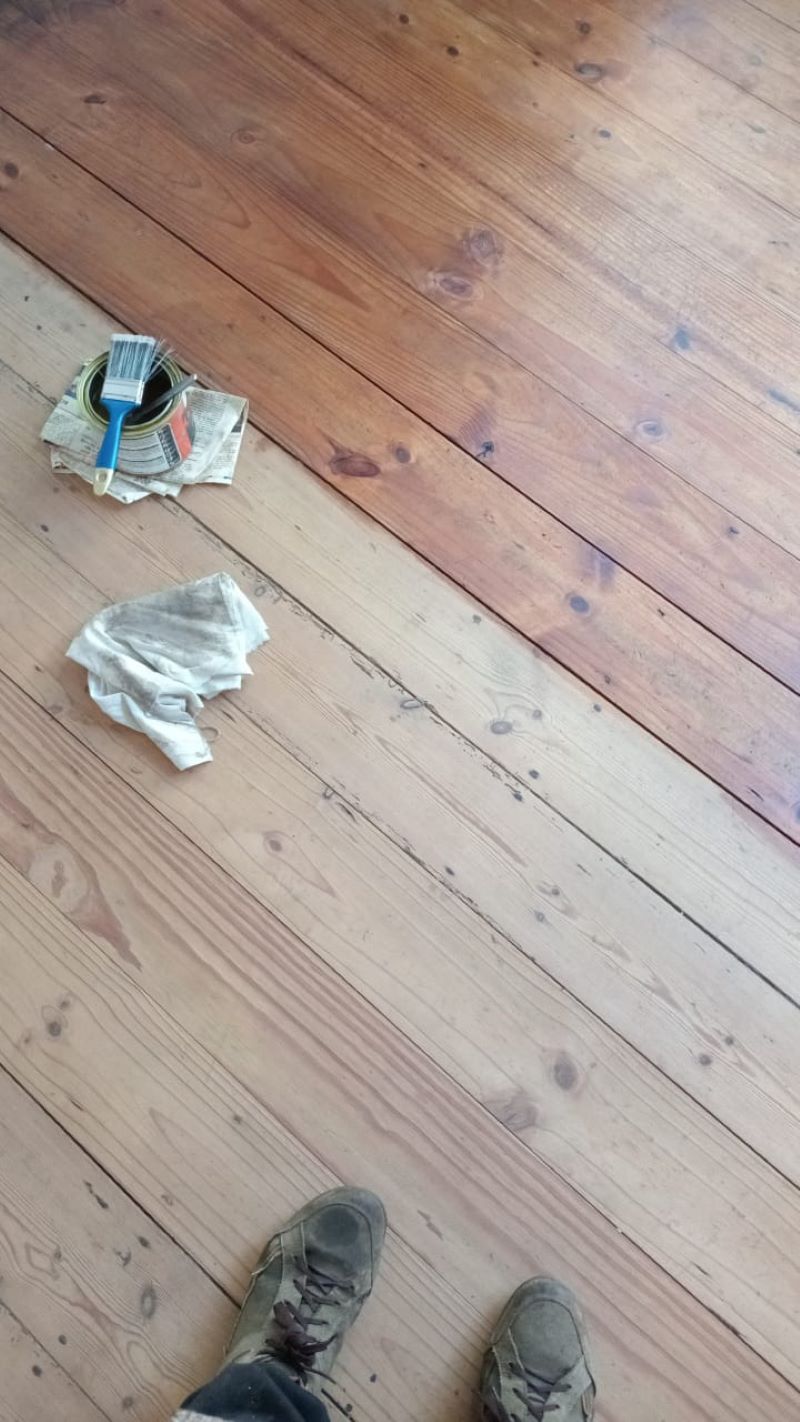
The colour enhancing effect of the natural coating is very pleasing and the satiny surface very sensual, I find. Interested in what mix I used ?I eventually struck on the right mix and as you know it took a lot of trial and error. I couldn't find anything online which quite does it. If you are interested, and send me a note I can give it to you, but can take no legal responsibility for the consequences. I like it because it paints on easily, and doesn't leave the surface coated with fatty wax residue, but has just enough wax to spread the mix rather than the floor sucking it up like a dry sponge. Colour wise it seems to stop the mix from soaking in and making the floor look like there has been an ugly oilspill, which plain linseed and linseed turpentine mixes tend to do. Neither does it require the intense rubbing and produce the dull absolutely unchanged colour of wax dominant mixes. On a clean floor it is for me the most beautiful colour enriching rather than overpowering finish, thus better than either an oil or a wax heavy mix, and certainly better to look at then polyurethane.
A note on safetyThe fumes from polyurethane and also from the turpentine in the natural coating are toxic. In the first case I wore a gas mask borrowed from a friend who does auto bodywork. In the second I didn't wear the mask and had a headache for 2 days. This is a symptom of exposure to turpentine. Please use a mask and ventilate well if you try my recipe.
Topic suggestions welcomeYou may write to me anytime at the website greenidiom by filling out a comment. You can also use my webmail (website mail) address greenidi@greenidiom.com. Part 2 of 'Gardening against Extinction'Part 2 of 'Gardening against Extinction' deals with the basics of designing a garden for maximum biodiversity. This section is not yet ready but it is in its third rewrite and getting a lot closer. The modules come if and when they're completed as I'm learning, researching and writing as we work through the course. I hope you enjoy the course !
Have you missed the introduction ?Please go to back issues right below if you want to catch up with what I've sent thus far as preamble for the course, as well as previous newsletters. |
| Back to Back Issues Page |